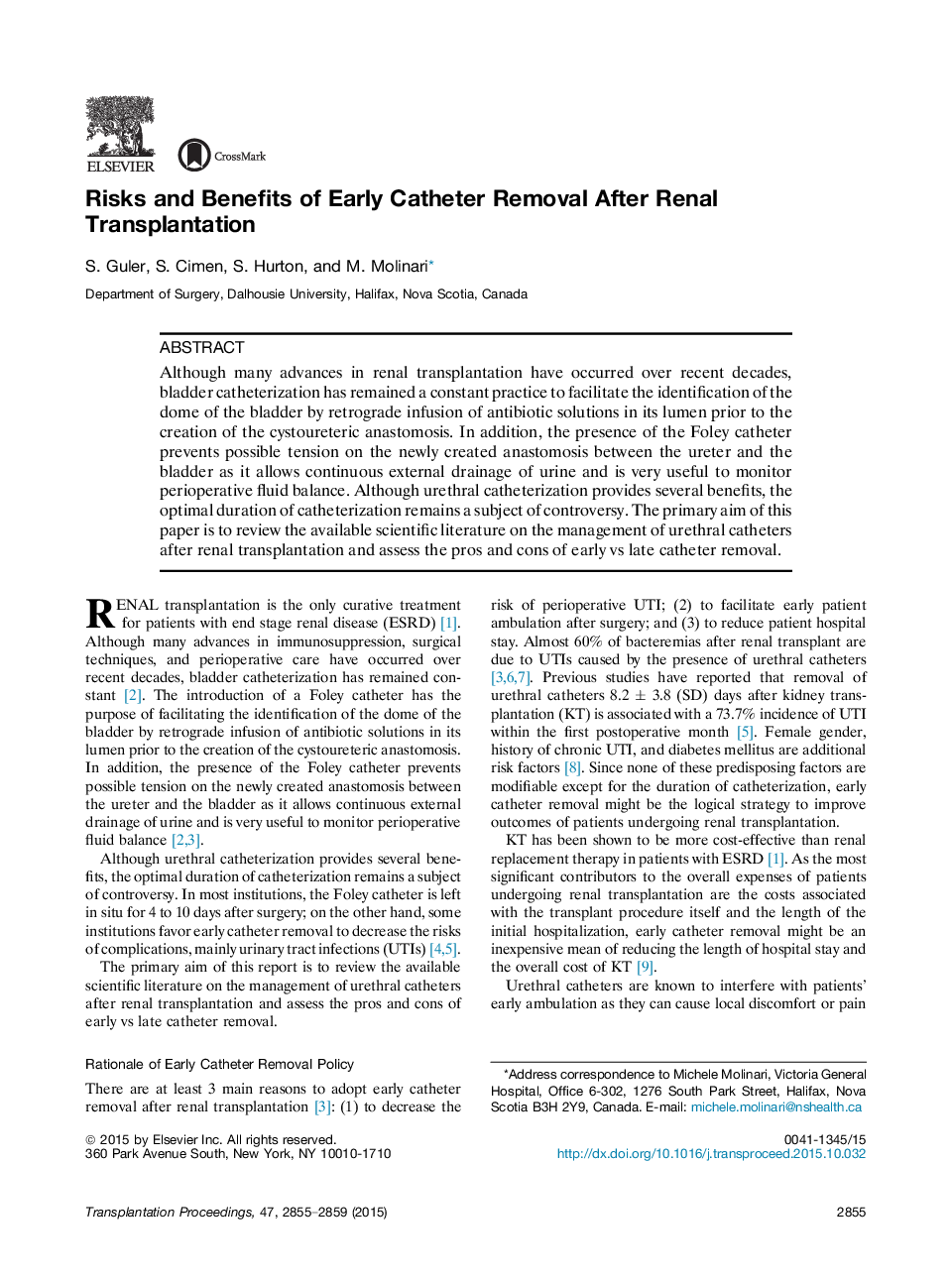| Article ID | Journal | Published Year | Pages | File Type |
|---|---|---|---|---|
| 4255833 | Transplantation Proceedings | 2015 | 5 Pages |
•We analyzed the current evidence on early Foley catheter removal after renal transplantation.•The pros and cons of urinary catheter removal in the early stages of perioperative recovery are presented.•The current evidence would suggest that early urinary catheter removal is not associated with higher risk of perioperative urological complications.•Early Foley catheter removal is associated with decreased incidence of urinary tract infections in patients undergoing renal transplantation.
Although many advances in renal transplantation have occurred over recent decades, bladder catheterization has remained a constant practice to facilitate the identification of the dome of the bladder by retrograde infusion of antibiotic solutions in its lumen prior to the creation of the cystoureteric anastomosis. In addition, the presence of the Foley catheter prevents possible tension on the newly created anastomosis between the ureter and the bladder as it allows continuous external drainage of urine and is very useful to monitor perioperative fluid balance. Although urethral catheterization provides several benefits, the optimal duration of catheterization remains a subject of controversy. The primary aim of this paper is to review the available scientific literature on the management of urethral catheters after renal transplantation and assess the pros and cons of early vs late catheter removal.
